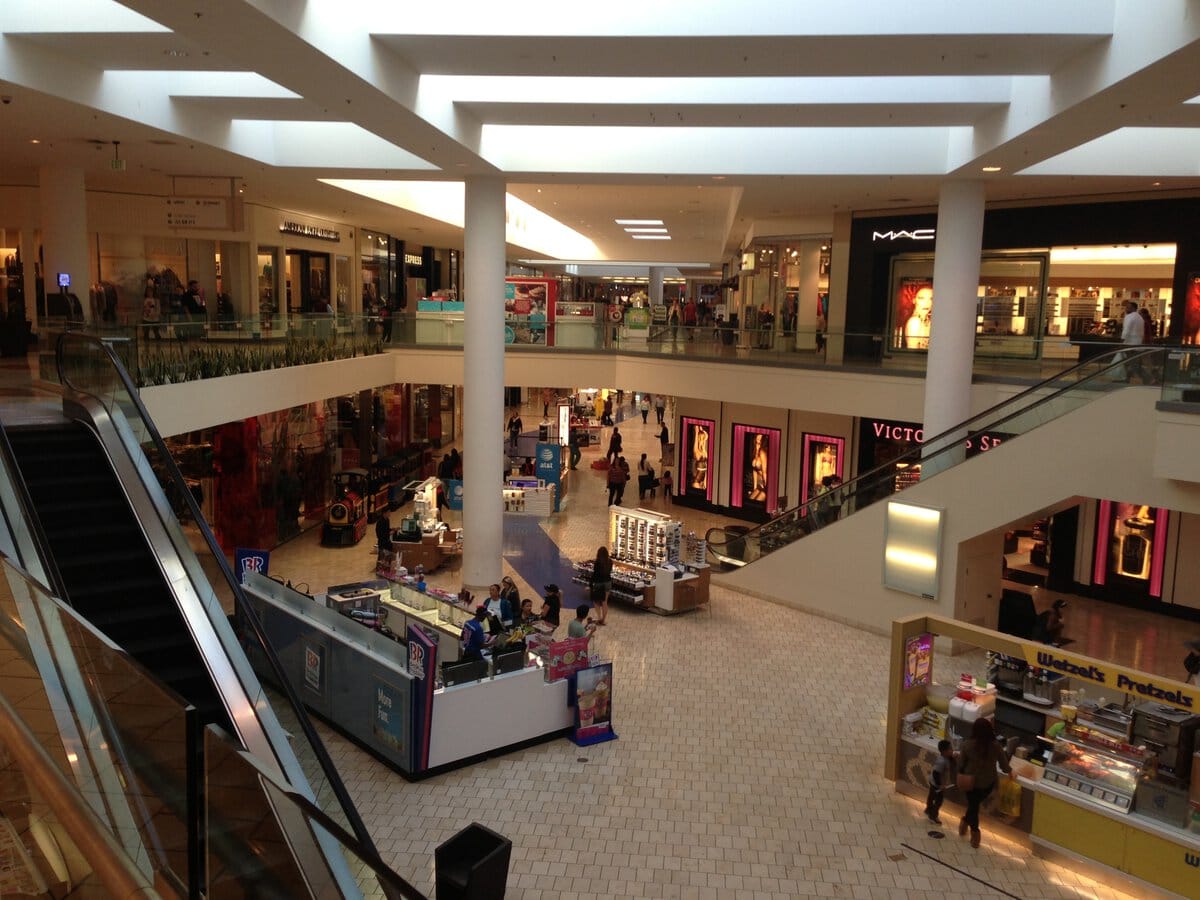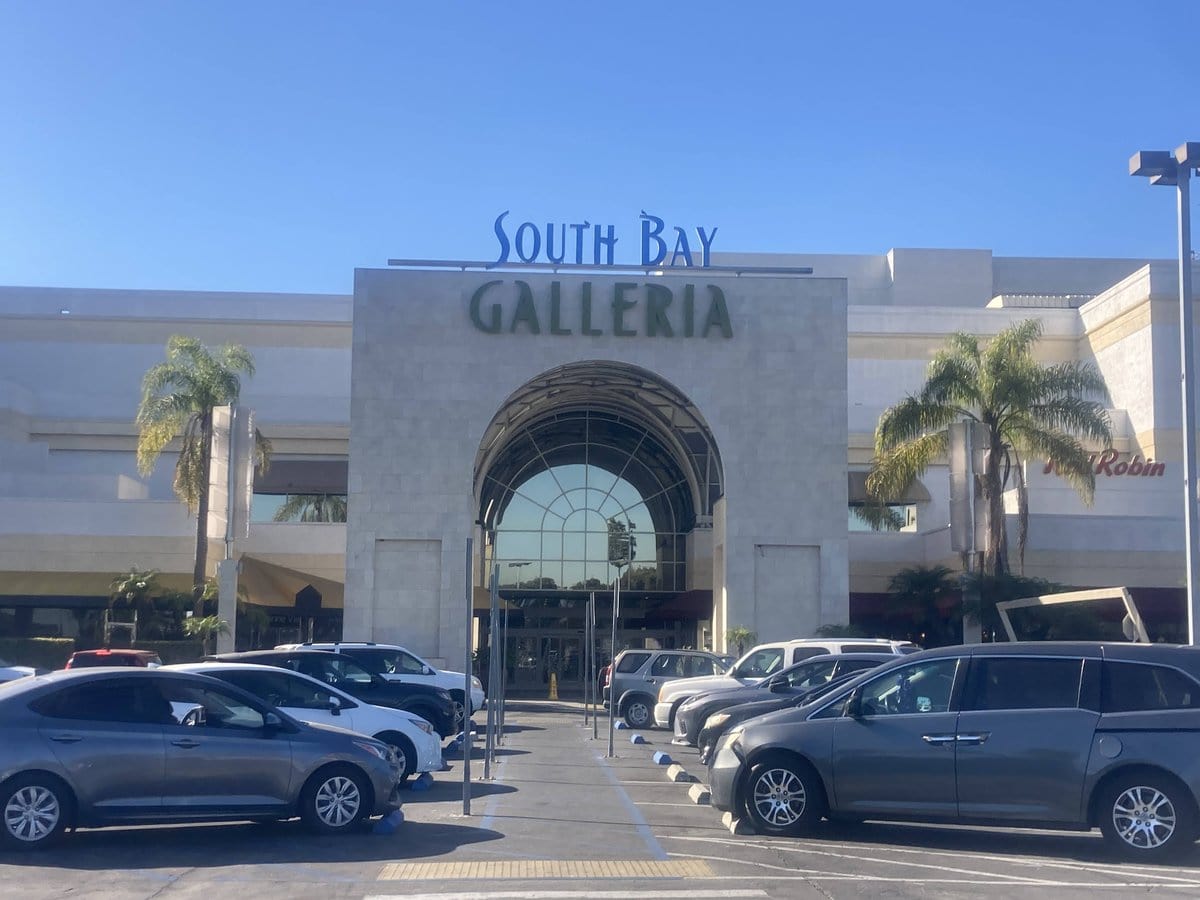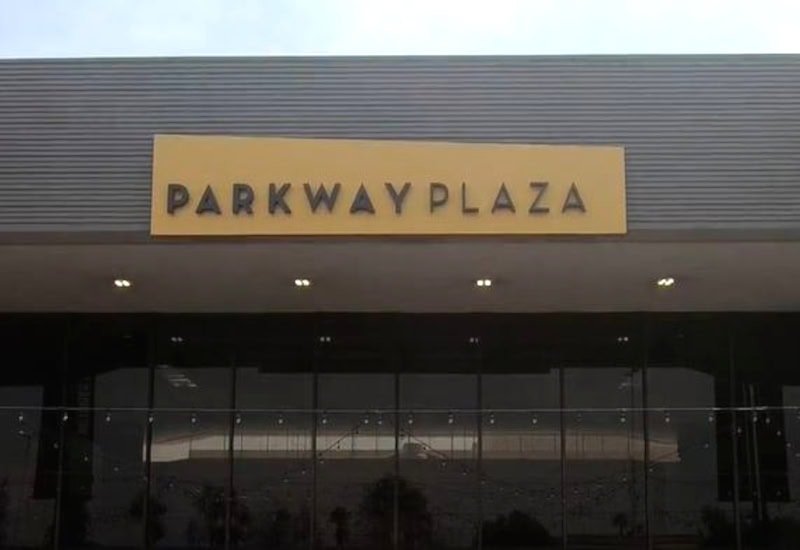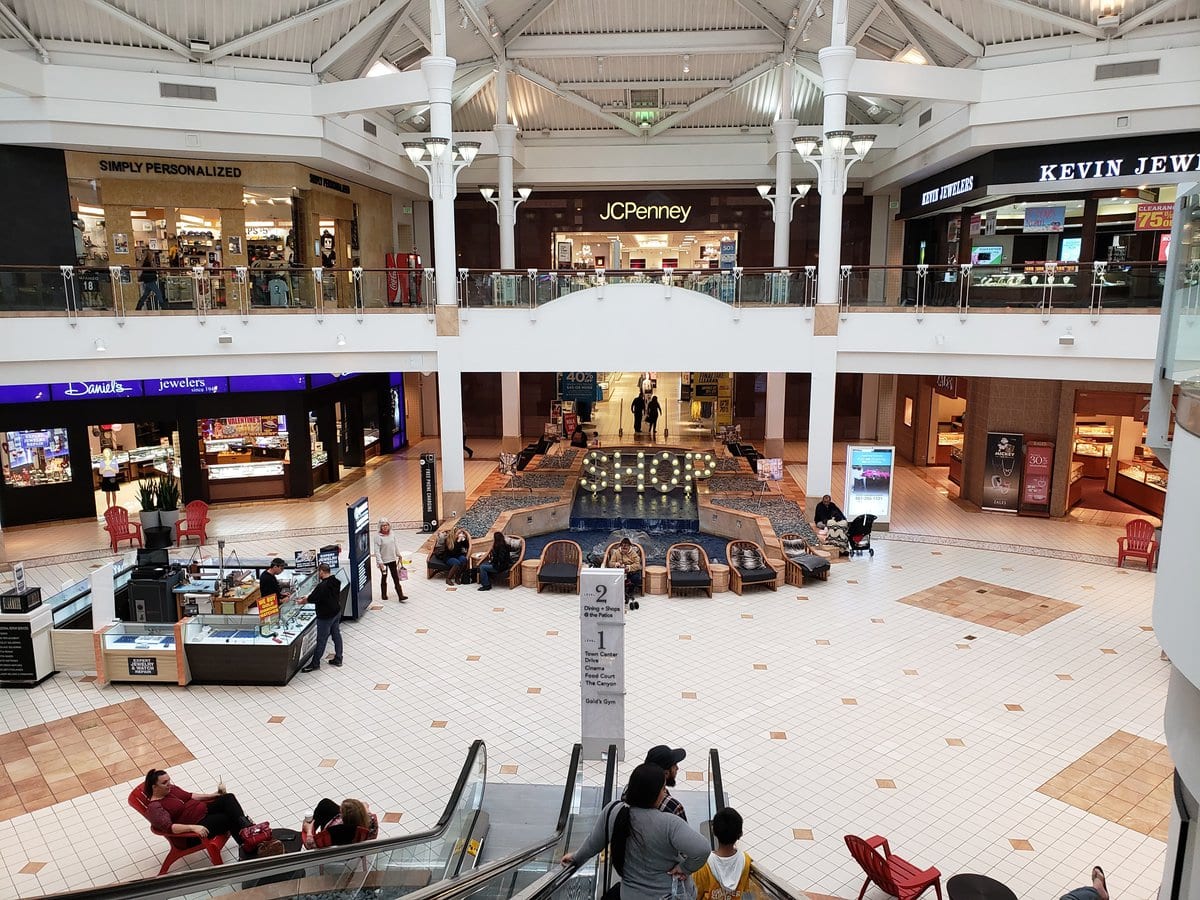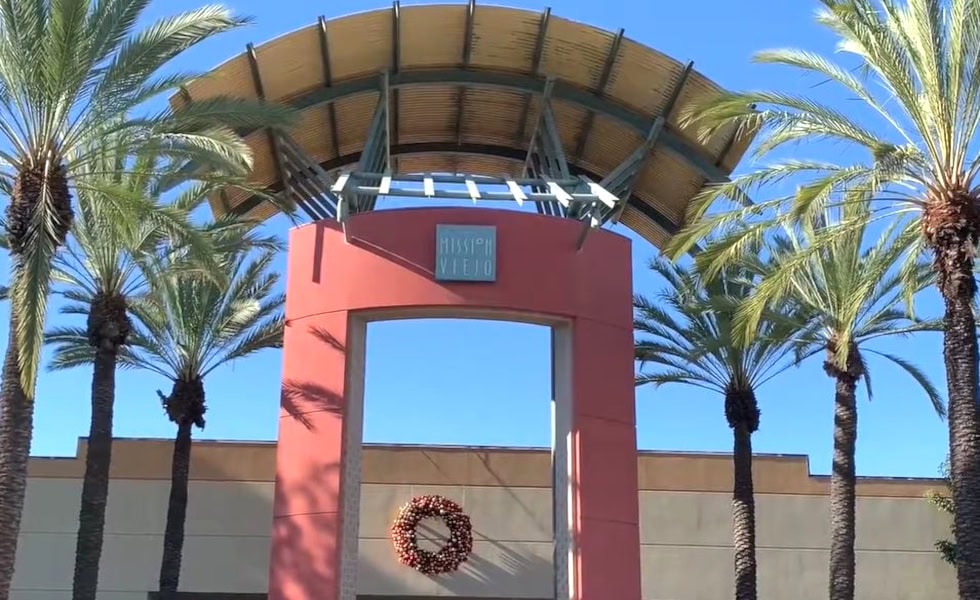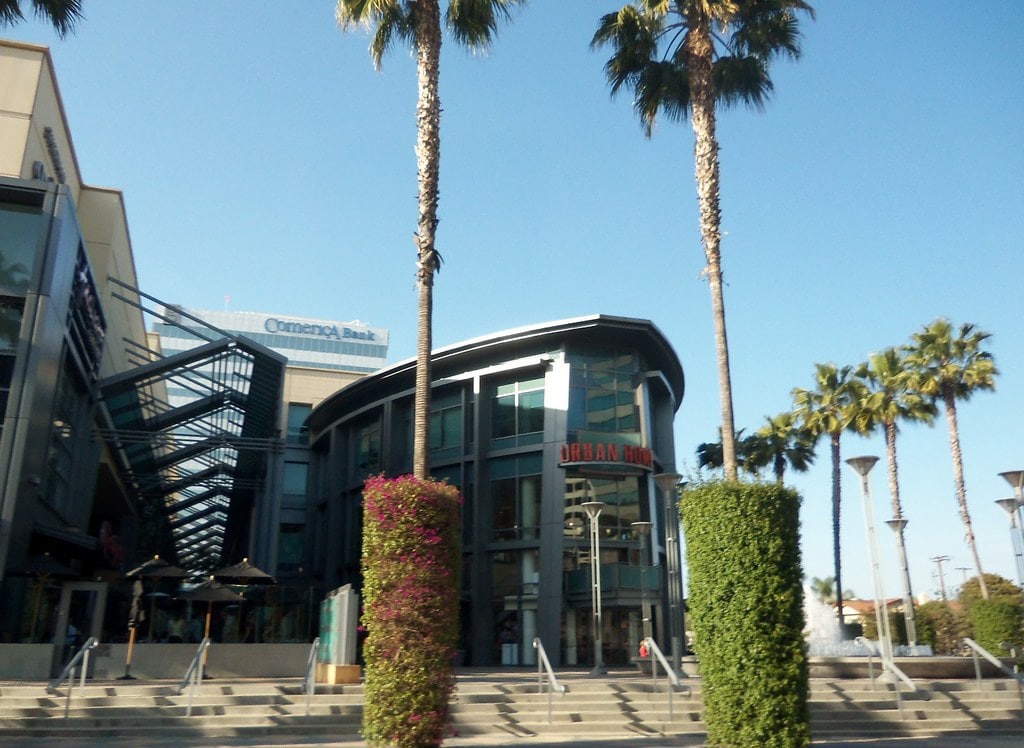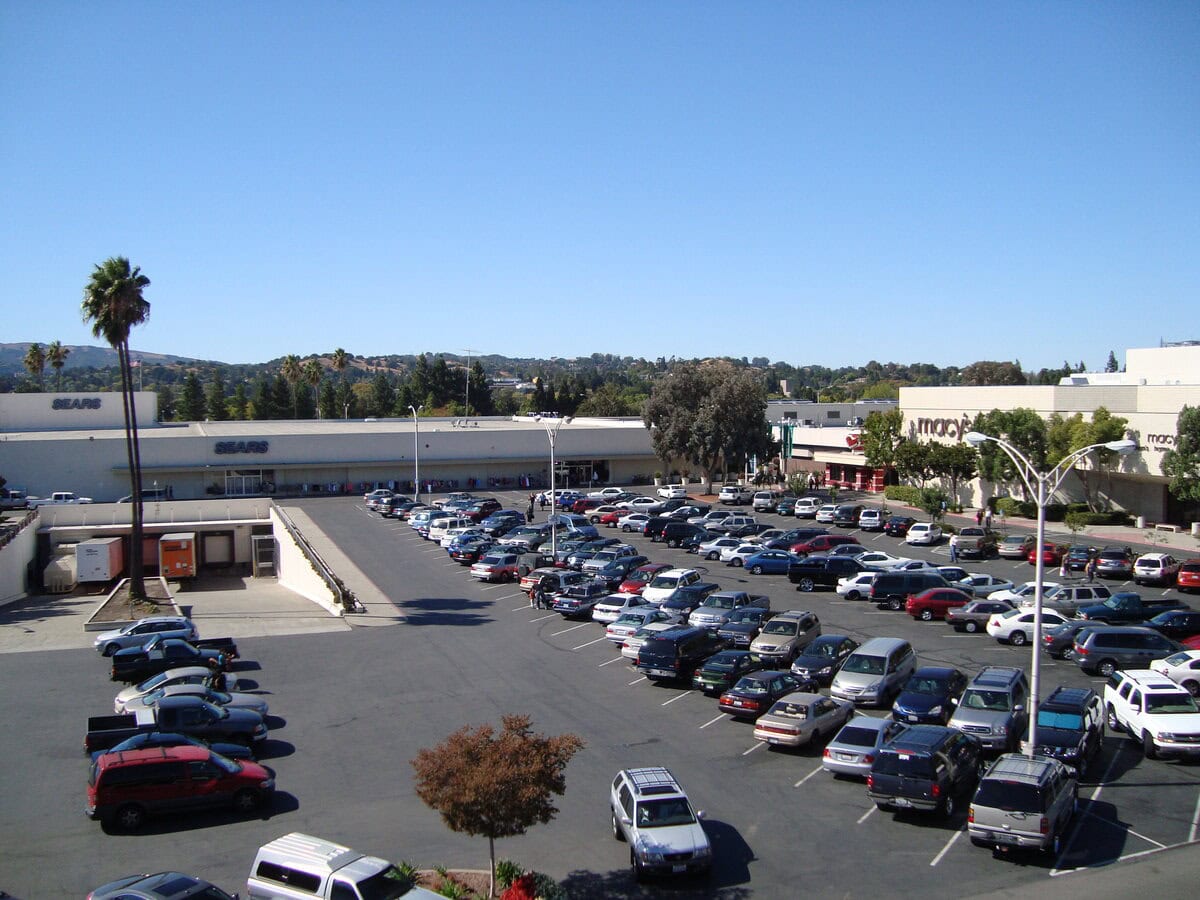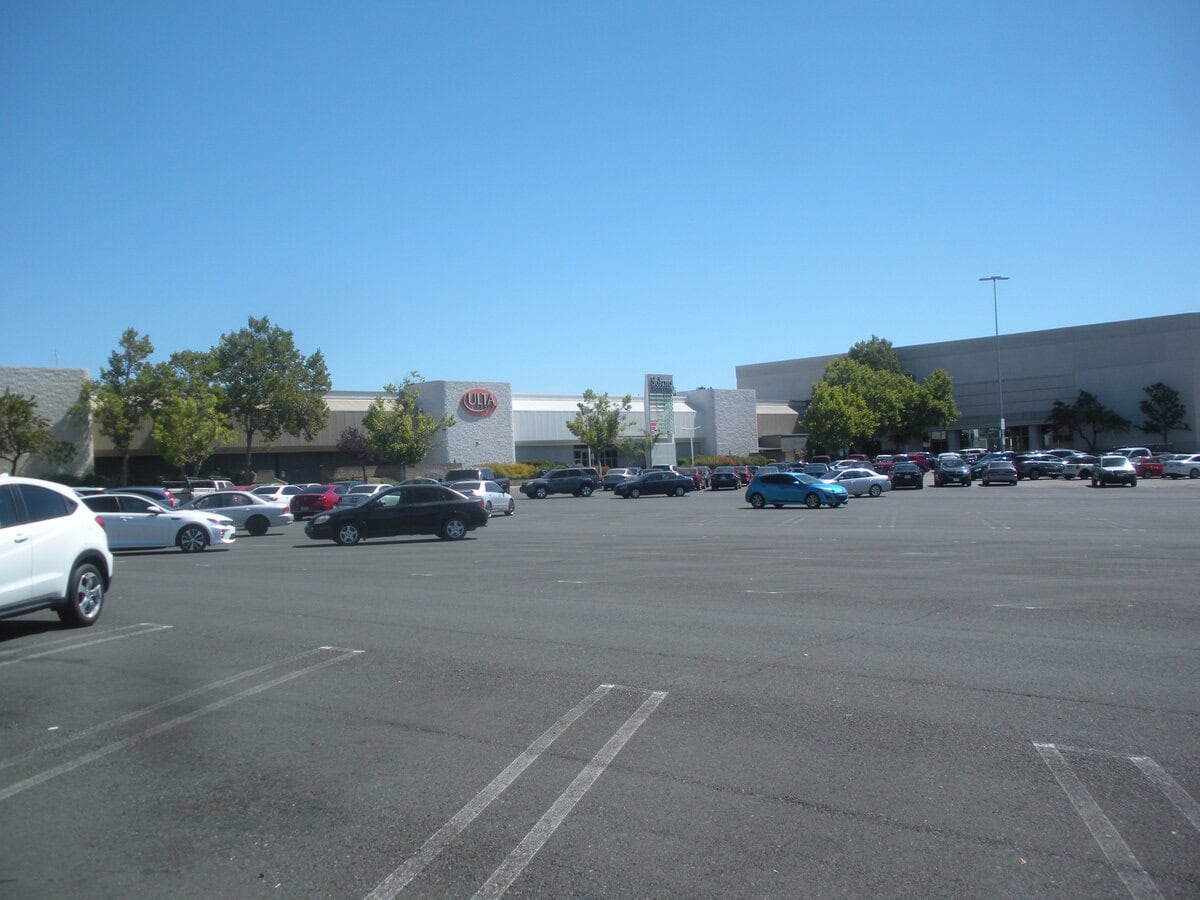Inception and Early Development (1982-1989)
The Shops at Palm Desert, originally called Palm Desert Town Center, opened its doors in 1982 as a major retail hub in Palm Desert, California.
Developer Ernest W. Hahn brought this $75 million project, spanning 62 acres, to life. At the time, it was a groundbreaking addition to the Coachella Valley, offering a wide array of shopping and entertainment options.
The mall's initial lineup included four major department stores: May Company, JCPenney, Bonwit Teller, and Bullock's. It also featured 130 smaller shops, a food court, and an eight-screen movie theater.
What set it apart from other shopping centers was its indoor ice skating rink - a rare and exciting attraction for visitors to the desert city.
By 1987, changes started reshaping the mall. Bonwit Teller closed its doors, and Bullocks Wilshire took over the vacant space. This move marked the first time a Bullocks Wilshire and a Bullock's store operated under the same roof.
Later that year, J.W. Robinson's opened as a fifth anchor, further boosting the mall's appeal. Another unique feature during this period was "The Yellow Brick Road," a small arcade located on the second floor near the food court and skating rink.
In 1989, Ernest Hahn purchased the property from Palm Desert Town Center Associates, cementing his influence on the mall's future.
This early era established the mall as a cornerstone of the region's shopping scene and an integral part of the things to do in Palm Desert, California, for residents and tourists alike.
Rebranding and Ownership Transitions (1990-2005)
The early 1990s brought changes to The Shops at Palm Desert, reflecting broader trends in the retail industry.
In February 1993, two anchor stores - J.W. Robinson's and May Company - merged under the Robinsons-May banner. This shift simplified the mall's lineup but maintained its strong retail draw.
By 1996, another rebranding took place. Bullock's, one of the mall's original anchors, transitioned to Macy's, marking a period of steady evolution for the property. These changes helped the center stay competitive as retail brands adapted to new consumer preferences.
A major turning point came in August 1999 when Westfield America, Inc. acquired Palm Desert Town Center from TrizecHahn Corporation for $82 million.
The acquisition brought a fresh identity: the mall was renamed Westfield Shoppingtown Palm Desert. At the time, this new branding aligned with Westfield's strategy to unify its U.S. properties under a single naming structure.
However, this phase didn't last long. By 2005, Westfield dropped the "Shoppingtown" moniker from most of its malls, simplifying the name to Westfield Palm Desert. This change reflected the company's evolving marketing approach and made the name easier to remember for visitors.
During this time, the mall continued to operate with a mix of longstanding retailers and new additions. Ownership changes and rebranding efforts kept it at the forefront of the Coachella Valley's shopping scene, even as the retail landscape began to shift.
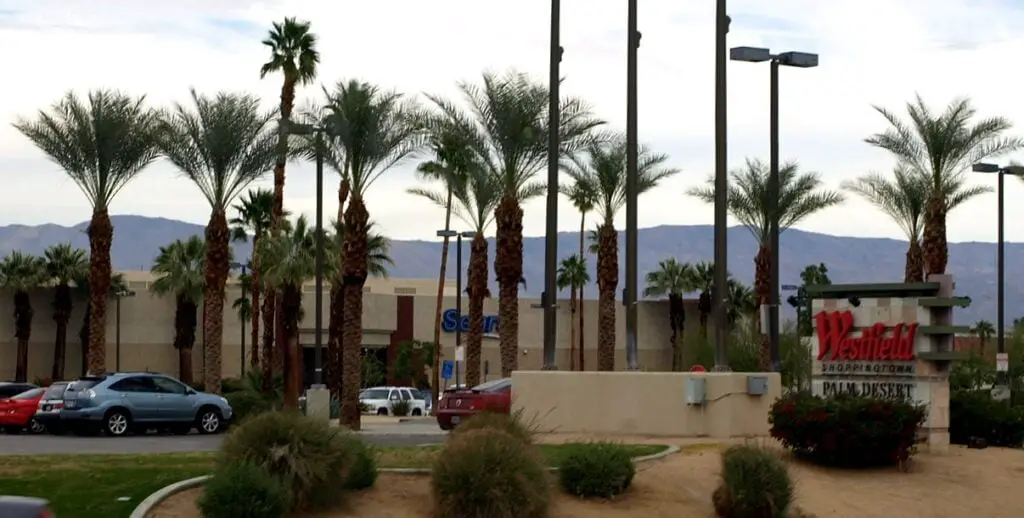
Renovations and Market Adaptations (2006-2014)
The mall entered a transformative period in 2006. Macy's moved into the expanded Robinsons-May space, leaving its original location. This relocation freed up space for future developments, which were crucial as the retail industry faced growing challenges from e-commerce.
In 2013, the mall underwent a major renovation. A two-level vacant anchor store on the north side was converted into a new retail and fitness destination.
The upper level became home to Dick's Sporting Goods, while the lower level was transformed into World Gym. These updates introduced new reasons for shoppers to visit and reflected a broader trend toward integrating lifestyle offerings into shopping centers.
The south side of the mall also saw changes. A partially vacant anchor space was remodeled to create the Grand Entrance, facing the busy California State Route 111.
This new gateway featured restaurants, retail spaces, and decorative water fountains, giving the mall a refreshed look and a more inviting atmosphere for visitors.
The updates extended beyond aesthetics. The renovation preserved parts of the mall's history, such as the subterranean level of the original Bullock's, which Macy's incorporated into its furniture store below Barnes & Noble.
By the end of 2014, Westfield Palm Desert housed 151 specialty stores and boasted a leasing rate of over 95%.
Anchor Store Changes and Property Management (2015-2021)
In 2015, Sears Holdings made a move that impacted malls nationwide, including Westfield Palm Desert. The company spun off 235 properties into a new entity, Seritage Growth Properties, to manage its real estate holdings, including the Sears location at the mall. However, the Sears store itself continued to operate for several more years.
By November 2019, Sears announced it would close its Westfield Palm Desert location as part of a plan to shutter 96 stores nationwide. This closure took place in February 2020, leaving another large anchor space vacant during a challenging time for the retail sector.
Ownership changes continued to shape the mall during this period. In 2015, Westfield sold a 47.4% stake in the property to O'Connor Capital Partners while retaining majority ownership.
Two years later, Westfield was acquired by Unibail-Rodamco, creating the global real estate powerhouse Unibail-Rodamco-Westfield.
In 2021, as part of a broader strategy to offload non-core assets, Unibail-Rodamco-Westfield announced plans to sell the mall. In preparation for the sale, they rebranded it as "The Shops at Palm Desert."
During this transitional phase, management of the property was handed over to JLL (Jones Lang LaSalle), a global real estate services company.
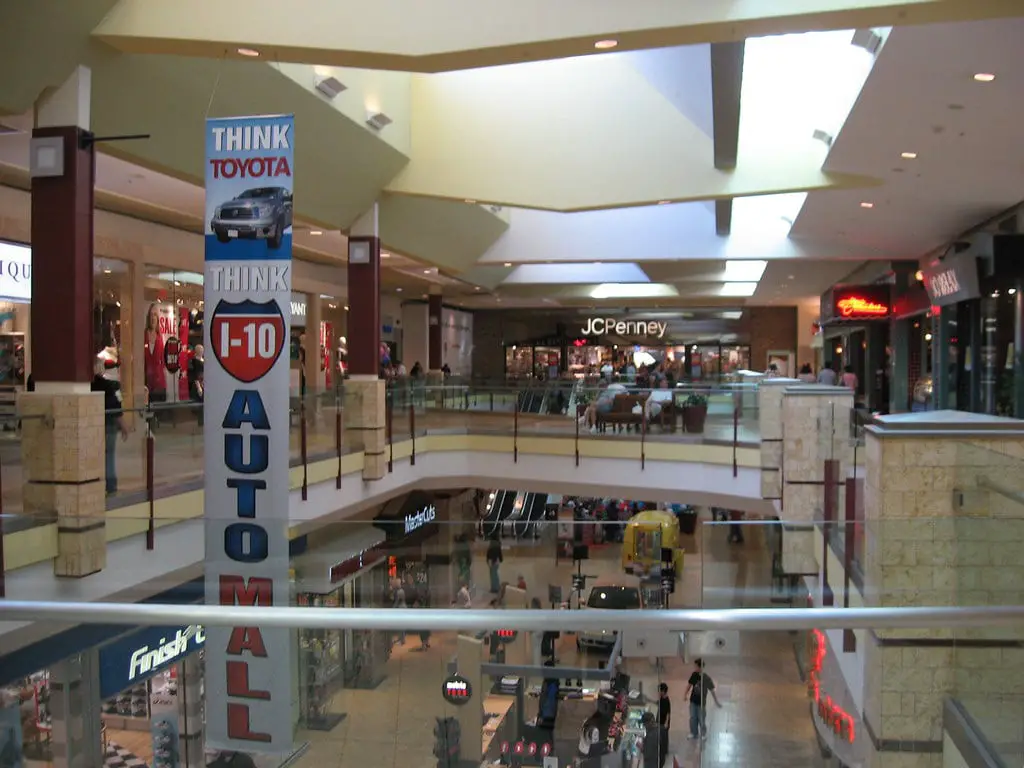
Recent Developments and Future Prospects (2022-Present)
The Shops at Palm Desert have continued to adapt in the last few years. In February 2023, Tristone Palm Desert 10 Cinemas, which had been a fixture at the mall, closed its doors.
The theater had been struggling, and management began discussions with various chains to bring a new operator to the space.
The beginning of 2023 saw a high-profile incident involving a shooting outside the mall, which raised concerns about safety. Since then, local authorities and mall management have worked to enhance security measures, ensuring a safer environment for visitors.
The mall underwent a major change in late November 2023 when Pacific Retail Capital Partners purchased the property from JLL. While the acquisition price was not disclosed, the new owners have expressed plans to redevelop portions of the property.
Early proposals include introducing mixed-use elements, such as residential spaces and green areas, to adapt to modern consumer preferences.
The City of Palm Desert views the mall's redevelopment as a critical opportunity to stimulate economic growth. The redevelopment aligns with broader efforts to modernize the city's infrastructure and attract younger demographics.
The Shops at Palm Desert remains the largest indoor shopping center in the Coachella Valley, continuing to house retailers like JCPenney, Macy's, Dick's Sporting Goods and Barnes & Noble.
However, the ongoing plans to reimagine the space hint at a shift from a traditional mall format toward a more modern, multifunctional complex that blends retail, housing, and recreational elements.

